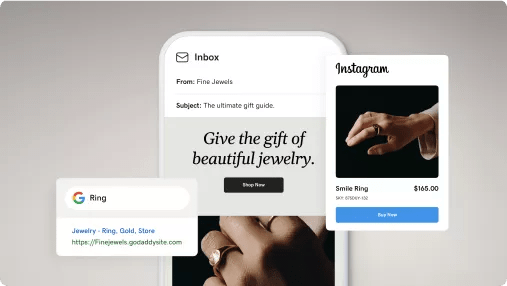Enhance User Experience and Drive Traffic With Receptive Website Design
In today's digital landscape, where users are accessing web sites from a plethora of tools, responsive web style has actually become more vital than ever before. With its capability to adapt and flawlessly change to different screen dimensions, receptive layout not just boosts user experience but likewise drives web traffic to your site. Why is this style technique so critical? Just how does it enhance customer interaction and increase internet site web traffic? In this discussion, we will explore the crucial elements of efficient responsive design, look into the ideal techniques for its application, and discover the secrets to enhancing customer experience while driving even more web traffic to your site.
Why Receptive Website Design Issues
Receptive internet layout is a necessary aspect of modern-day web advancement as a result of its capability to ensure ideal user experience throughout different gadgets and screen dimensions. With the expansion of smart devices, tablets, and other mobile devices, it has actually ended up being crucial for sites to adjust and supply seamless functionality despite the gadget being made use of.
The primary reason why responsive website design issues is that it permits customers to have a regular and pleasurable searching experience, no matter the tool they are utilizing. A responsive site instantly adjusts its design, material, and layout aspects to fit the screen dimension and resolution of the tool, guaranteeing that users can conveniently navigate and engage with the site with no aggravation or irritation.
Moreover, responsive website design additionally plays a substantial duty in search engine optimization (SEARCH ENGINE OPTIMIZATION) Online search engine, such as Google, prioritize web sites that are mobile-friendly and receptive in their search outcomes. By integrating receptive layout concepts, web sites can boost their visibility and position, bring about raised organic website traffic and potential consumers.

Boosting User Interaction Via Responsive Layout
Optimizing individual involvement is a key goal of responsive layout, as it guarantees that customers can easily gain access to and interact with website web content on any gadget. With the increasing usage of tablets and mobile phones, it is crucial for sites to adapt to different display dimensions and resolutions. Responsive style enables web sites to instantly adjust their design and web content to supply a smooth user experience across tools.
Among the primary methods responsive style enhances user involvement is by minimizing tons times. With a receptive web site, individuals don't have to wait for different mobile versions to tons, causing quicker access to content. This enhanced speed leads to greater individual complete satisfaction and urges them to invest more time on the website.
In addition, responsive design improves individual engagement by enhancing navigating and customer interface (Web Design Carlsbad). When a web site is designed responsively, switches and menus are optimized for touch interactions, making it easier for users to interact and navigate with the site on their smart phones. This easy to use and user-friendly experience maintains individuals involved and motivates them to discover even more of the internet site
In addition, responsive style enables much better material exposure and readability. By adjusting the design and font style dimensions to different gadgets, receptive sites guarantee that customers can conveniently understand the content and read. This boosts customer engagement by minimizing the demand for scrolling or zooming to review the text.
Increasing Web Site Traffic With Responsive Internet Style
With the expanding popularity of mobile tools, having a site that is responsive to different screen dimensions and resolutions is crucial for driving raised web traffic. In today's electronic landscape, customers are accessing web sites from a range of gadgets such as smartphones, tablets, and desktop computers. Each of these tools has different screen dimensions and resolutions, and if your web site is not created to adjust to these variations, it can result in an inadequate user experience and a loss of possible traffic.
Receptive internet layout ensures that your web site looks and works efficiently across all gadgets. By utilizing adaptable grids, fluid images, and media queries, receptive design allows your site to immediately change its navigation, design, and content to fit any display size. This means that users will certainly have a seamless surfing experience despite whether they are making use of a small smartphone or a big desktop computer computer.
Key Aspects of Reliable Responsive Layout
Efficient responsive layout incorporates a number of essential components read that guarantee a seamless individual experience across different devices. This permits material to be presented in a visually attractive and legible fashion on any kind of gadget.
Another essential component is media questions. These allow designers to use different designs and formats based upon the qualities of the user's tool, such as display size and orientation. By using media questions, developers can maximize the presentation of web content for every tool, ensuring that it is understandable and quickly obtainable.
Receptive photos are additionally vital in reliable responsive style. Pictures that are also huge can decrease page load times on mobile devices, while photos that are too small may appear pixelated on larger screens. By using strategies such as receptive photo resizing and careless loading, designers can guarantee that photos are suitably sized and maximized for every tool.
Finally, reliable responsive layout includes a mobile-first approach. This means prioritizing and making material for mobile phones first, and after that increasing and improving the style for larger displays. This method guarantees that one of the most vital material is conveniently accessible on smaller screens, while still offering a rich experience on larger tools.
Finest Practices for Implementing Receptive Internet Layout
Implementing responsive website design calls for mindful consideration of different ideal techniques to ensure an optimum customer experience across various gadgets. Here are some essential finest practices article source to follow when applying receptive web layout.
Firstly, it is essential to prioritize mobile individuals. With the boosting supremacy of smart phones, developing for mobile-first has come to be important. Beginning by designing for smaller sized screens and afterwards considerably improve the layout for bigger displays.

One more essential ideal practice is to enhance pictures for various screen resolutions. Huge images can slow down the filling time of your internet site, specifically on smart phones with slower links. Use receptive images that can be resized based on the tool's display resolution to enhance efficiency.
Furthermore, test your site on different devices and screen sizes to guarantee a consistent and seamless experience. There are different testing devices available that can aid you recognize any kind of concerns and make needed adjustments.
Last but not least, prioritize usability and access. Make sure that your site is very easy to navigate, with concise and clear web content. Make certain that your web site is available to people with specials needs and adheres to access standards.
Final Thought
Finally, receptive web design plays an essential duty in improving user experience and driving web traffic to sites. By adopting responsive layout principles, sites can make certain optimal viewing experiences across different gadgets, resulting in enhanced user engagement (The Ad Firm Web Design). Additionally, responsive style can also add to greater website traffic as it improves internet search engine positions and promotes easy sharing of material. Businesses ought to focus on executing the essential elements and best techniques of responsive style to effectively meet the needs of contemporary customers.
Optimizing customer engagement is a key objective of receptive style, as it guarantees that customers can easily access and interact with internet site web content on any tool. Receptive design allows websites to instantly readjust their design and material to provide a smooth individual experience throughout tools.
Additionally, receptive design improves user involvement by boosting navigating and customer interface.Responsive pictures are also critical in effective receptive YOURURL.com design. By taking on responsive style concepts, websites can ensure optimal viewing experiences across various gadgets, leading to enhanced individual interaction.